�
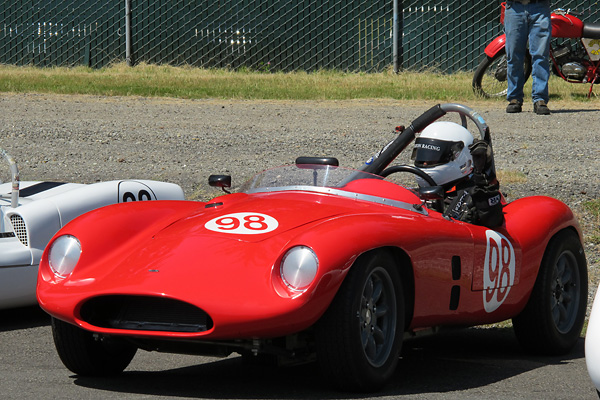
�
�
Bill Hart's 1957 Devin Bodied Triumph Vintage Race Car
� � Owner: Bill Hart� City: Seattle, Washington
� Chassis: 1953 Triumph TR3, with 1957 Devin body
� Engine: Triumph TR3 engine
� Race prepared by: Tony Garmey �
�
Devin Bodies Suited Popular British Sportscars
��
Devin Enterprises Inc. is widely remembered as one of the earliest and most successful�
manufacturers of fiberglass kit-car bodies. Devin bodies were installed over all sorts of�
chassis, and powered by all sorts of engines. Devin-bodied British sports cars - specifically�
Triumph, MG, and Austin-Healey specials - were well represented in the North American�
racing scene of the 1960s.�
�
Proprietor Bill Devin (1915-2000) had grown up in Oklahoma around his father's Chevrolet�
car dealership. After wartime service as a Machinist's Mate in the Navy, Devin set himself�
up in business with one Chrysler-Plymouth agency and then another, but he and his brother�
Gene were drawn to European sports cars and to the Southern California racing scene of the�
early fifties. It wasn't long before Devin was wheeling and dealing in Siata and Ferrari�
sports cars. However, he found that the European companies on the whole seemed to have a�
disdain for their American customers. He aspired to build sportscars in California.�
�
Devin's initial offering was a rather odd little creation known as a Devin Panhard. These�
were lightweight front-wheel-drive cars powered by 750-850cc air-cooled two-cylinder engines�
with uniquely belt-driven overhead cams. (Bill Devin was very proud of that innovation.)�
Sold for $995 in kit form or $2850 complete, around twelve were built. Bill's friend�
Jim Orr raced a Devin-Panhard in 24 SCCA races to win SCCA's 1956 H-Modified Class�
National Championship.�
�
Devin set up to produce fiberglass car bodies in El Monte, California. Production spanned�
from about 1955 into 1964. Through that decade, Devin advertisements appeared in all the�
popular American sports car magazines. Completed Devin projects were the subjects of feature�
articles. The company produced complete cars too - three basic models - but only in�
very modest volumes. By the standards of their day, styling and fiberglass production quality�
were considered top-notch yet pricing was remarkably affordable.�
�
Please support the sponsoring companies who make www.BritishRaceCar.com possible, including:
� �
 �
�
�
�
�
Who styled those beautiful Devin bodies? Bill Devin stole the design from Scaglietti.�
Specifically, Bill Devin borrowed an Italian-made 1955 Ermini Tipo 357 Sport (body by Scaglietti,�
1100cc engine) from his friend Jim Orr and used it as a "plug" to create the Devin body molds.�
His genius was in adaptation. He figured out how to cut here and extend there, until he had�
a set of over fifty molds with which he could create just about any sized sportscar body his�
customers might desire.�
�
Early Devin magazine ads offered bodies for "Crosley, Healey, TR, MG, Fiat, Hillman,�
Volkswagen, Morris and many other light car chassis..." Initially, Devin fiberglass bodies�
were offered "ready-to-mount" in twenty-four different track and wheelbase combinations.�
That number later expanded to twenty-seven to suit longer (typically American) chassis�
designs.¹ Regardless of size, all twenty-seven models were priced the same at just $295. �
�
A limited range of non-fiberglass parts were offered: hinges, door catches, steering wheels,�
Stewart Warner gauges, Borrani wire wheels, and eventually a special deDion assembly configured�
to work with a Chevrolet Positraction differential.�
�
�
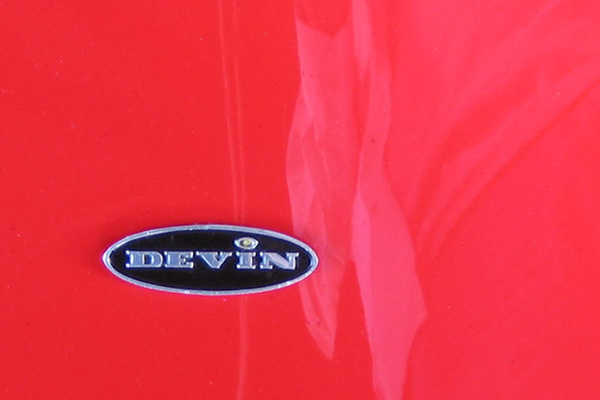
�
Devin Enterprises Inc. bonnet emblem.
�
�
In addition to bodies, Devin also offered complete kits. Some of Devin's early ads noted that�
$995 would purchase a fiberglass body, a tube-frame chassis, axles, and suspension.�
As you might expect, the content of these kits was negotiable and extremely variable.�
�
Bill Devin made initial plans for an "SS" model kit car in 1956. It would have used 1940s�
Ford and Lincoln components (including a narrowed solid front axle) but powered by a Chevrolet�
Corvette 283cid V8 engine. The SS concept changed dramatically based on conversations with a�
customer named Malcolm MacGregor of Belfast, Ireland. The reconsidered Devin SS would be a premium�
sportscar, using lighter weight British components (e.g. Girling brakes), and Bill Devin's new�
target was to sell 150 fully-assembled cars to meet FIA homologation requirements.�
Only fifteen cars were actually completed, in a production run that started in 1958 and carried�
into 1961. Devin had contracted with Devonshire Engineering in Ireland to produce the SS's tube frame,�
without anticipating various logistical problems which increased his costs. An initial price of $5950�
had been announced in magazine articles, but had to be increased to over $10,000 during production.�
�
Devin's D model was aimed more realistically, and therefore sold better. Despite using Volkswagen beetle chassis�
and drivetrain components, it received generally favorable press attention. The review in Sports Car Graphic's�
May 1961 edition was titled "D Stands for Delightful" although the small print included complaints about the�
test car's lack of power and its horrible brake equipment. Devin offered the C in kit form, without any VW parts,�
for $1495. As a completed car, the price was $2950. �
�
The Devin C model came next. This time, C stood for Corvair. By the end of all production in 1964, Devin�
claimed sales of the C and D combined had reached 150 units. �
�
Credible sales records don't exist, but total sales volume of Devin's fiberglass bodies may very�
well have reached four digits. It's unlikely more than a quarter of that number were ever mounted.�
�
 �
�
�
�
Bill Hart's Devin Triumph Special
� �
Bill Hart's Devin bodied Triumph was originally built to be a street car. �
When Bill Hart acquired it, it still had old license plates on it.�
He has been racing it for eleven years now.�
�
Bill recalls that the car started out horribly. It wouldn't go fast, and it wouldn't stop either. �
After quite a lot of development, it's turned into a little rocketship. Furthermore, it draws�
complements everywhere it races. In his latest book, Kas Kastner describes Bill Hart's Devin bodied�
Triumph as follows: "Set up to be ultra reliable, and very quick. Bill enjoys a lot of track time�
with this great car. Bill's car has the best body and paint work I have ever seen on a fiberglass�
body." High praise indeed, especially considering the source. Bill has received an invitation and�
will be taking his Devin Triumph to the Monterey Historics this year.�
�
Features and Specifications
�| Engine: | �rebuilt and race prepared Triumph TR3 engine, originally 1991cc but now about 2100cc.�
89mm bore.�
164bhp.�
Approximately 11:1 static compression ratio.�
Dual Weber 45DCOE carburetors.�
Mallory distributor. (two wire)�
MSD Blaster ignition coil.�
Taylor Spiro Pro 8mm silicone spark plug wires.�
Gear reduction starter.�
Deep sump finned aluminum oil pan. | �
| Cooling: | �aluminum crossflow radiator.�
Electric cooling fan.�
Oil cooler. | �
| Exhaust: | �custom four into one header.�
Stainless steel muffler. | �
| Transmission: | �Triumph TR3 gearbox, rebuilt with close ratio gears.�
Triumph shifter lever, rotated 180 degrees. | �
| Rear axle: | �Triumph TR3 housing.�
Tran-X limited slip differential. | �
| Front Susp.: | �stock Triumph TR3 Alford & Alder forged uprights.�
Custom fabricated control arms modified with Heim joints on outboard side for adjustability.�
Stock lower control arms modified with Heim joints on inboard side for adjustability.�
KONI telescoping shock absorbers.�
Adjustable (5 position) modular anti-sway bar. | �
| Rear Susp.: | �leaf springs.�
Lever shock absorbers.�
Adjustable anti-sway bar mounted on aluminum pillow blocks. | �
| Brakes: | �(master) dual master cylinders with bias bar. � (front) Girling aluminum calipers. Solid rotors. � (rear) aluminum finned drums. | �
| Wheels/Tires: | �Compomotive ML 8-spoke aluminum wheels.�
Hoosier Vintage T.D. tires (5.00x15 front, 5.50x15 rear). | �
| Electrical: | �Enersys / Odyssey sealed lead acid battery.�
Nippondenso alternator, with oversized pulley. | �
| Instruments: | �(left to right)�
Stewart Warner voltmeter (10-16V),�
Stewart Warner oil temperature gauge (140-325F),�
Jaeger tachometer (0-8000rpm),�
Stewart Warner oil pressure gauge (5-80psi),�
Stewart Warner water temperature gauge (100-265F), and�
Stewart Warner air/fuel ratio gauge. | �
| Fuel System: | �Fuel Safe steel canister fuel cell.�
Facet Bendix-style electric fuel pump.�
Holley adjustable fuel pressure regulator. | �
| Safety Eqmt: | �Willans cam-lock safety harness.�
Quick release steering wheel hub.�
SPA Design FireSense fire suppression system.�
SPA Design mirrors, both sides and rearview. | �
| Weight: | �~1640#. | �
| Racing Class: | �vintage EP (SOVREN). | �
Please support the sponsoring companies who make www.BritishRaceCar.com possible, including:
� �
 �
�
�
�
Engine Installation
��
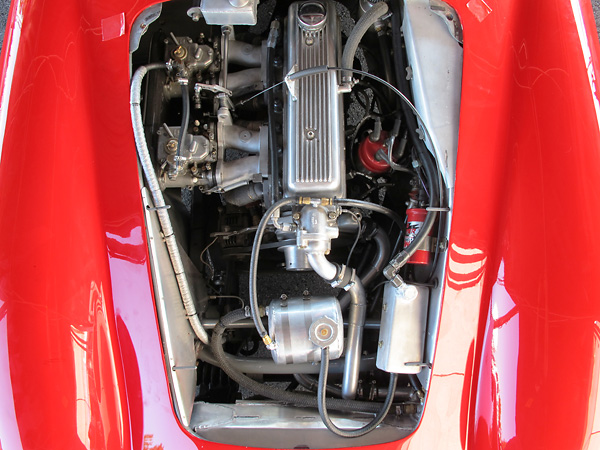
�
Rebuilt and race prepared Triumph TR3 engine.
�
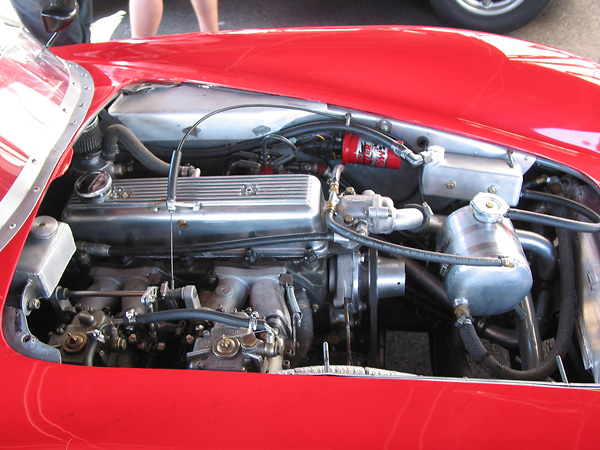
�
The Triumph TR3 engine has been shifted about five inches rearward relative to the TR3 frame.
�
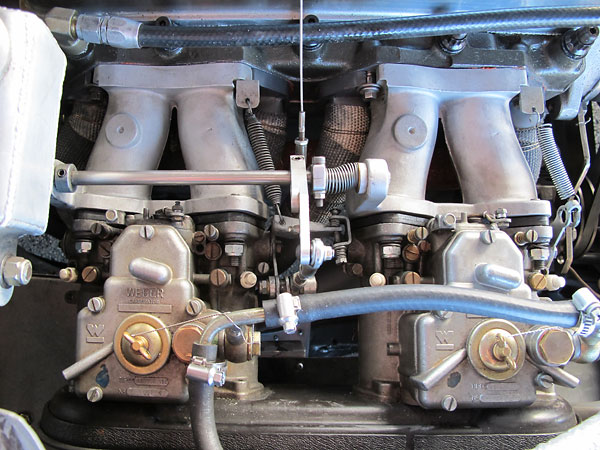
�
Dual Weber 45DCOE152 carburetors.
�
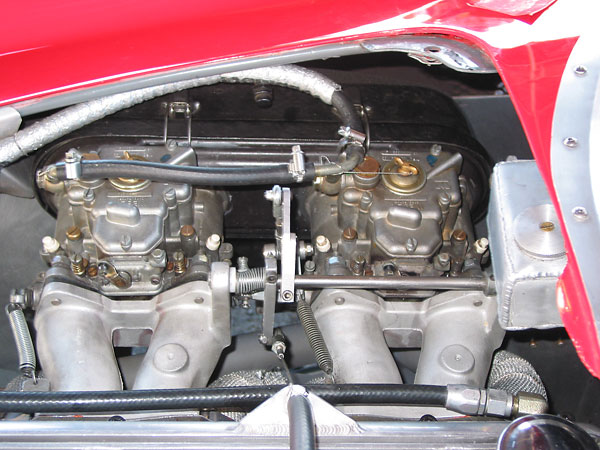
�
Bill prefers Weber carburetors to the original S.U. units because he feels they're easier to tune.
�
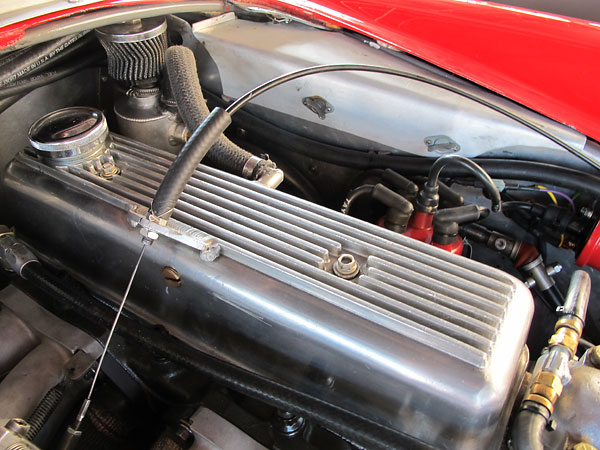
�
Finned aluminum valve cover.
�
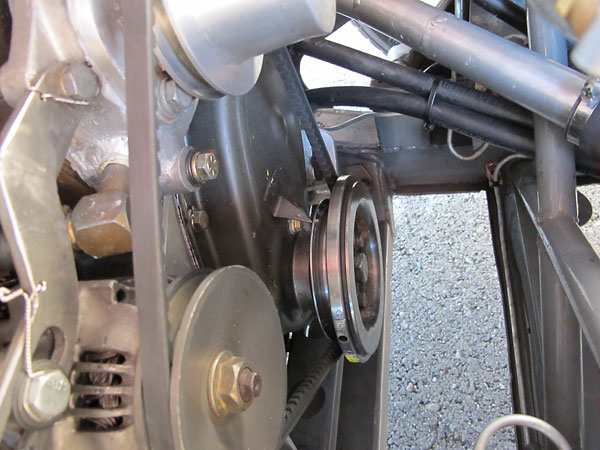
�
Crankshaft pulley/harmonic balancer has two timing marks: one at 15 degrees and one at 35 degrees.
�
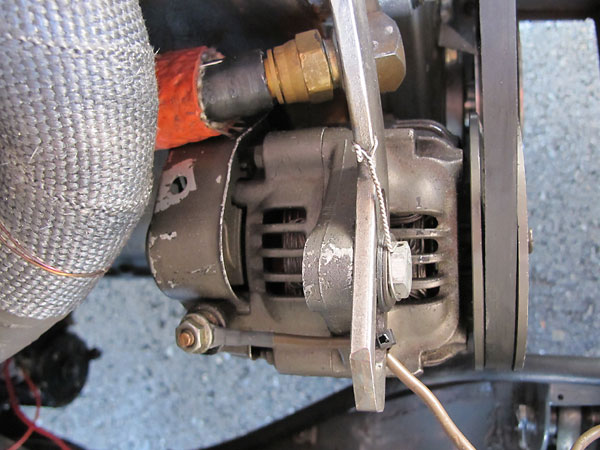
�
Nippondenso alternator, with oversized pulley.
�
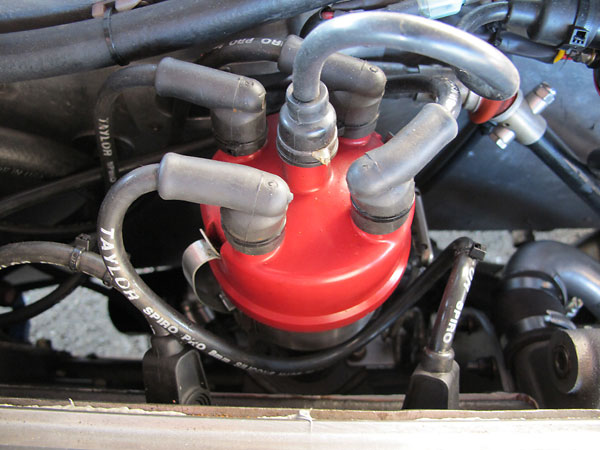
�
Mallory distributor. Taylor Spiro Pro 8mm silicone spark plug wires.
�
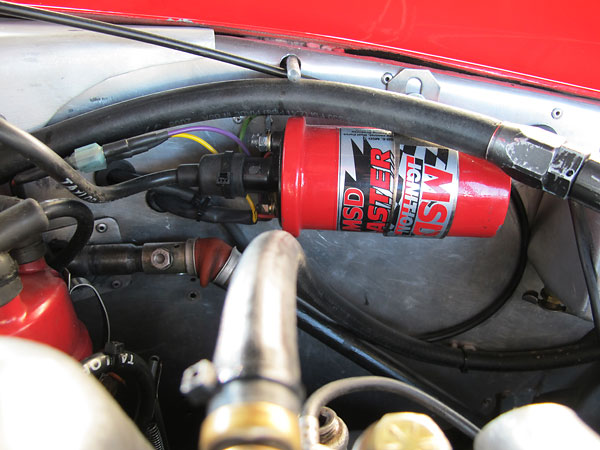
�
MSD Blaster ignition coil.
�
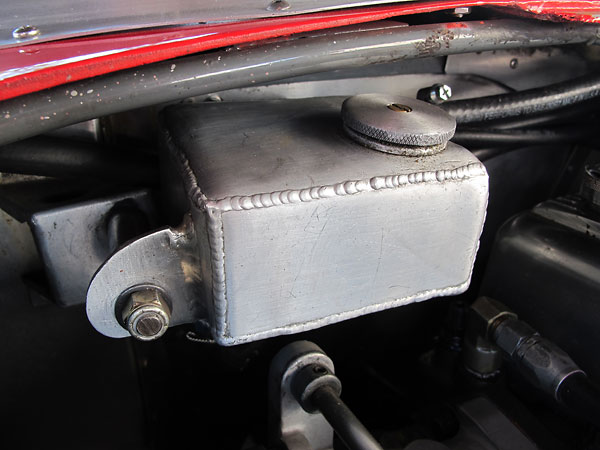
�
Custom fabricated aluminum brake fluid reservoir.
�
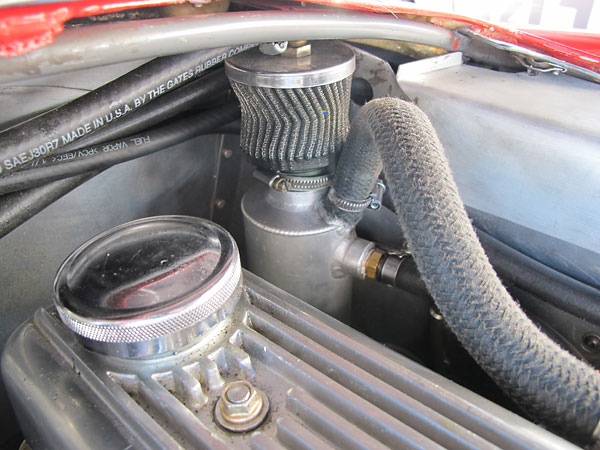
�
Aluminum crankcase breather tank.
�
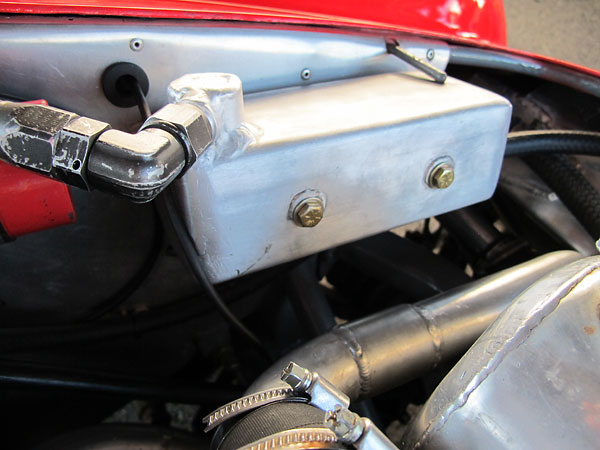
�
Custom fabricated aluminum coolant overflow catch tank.
�
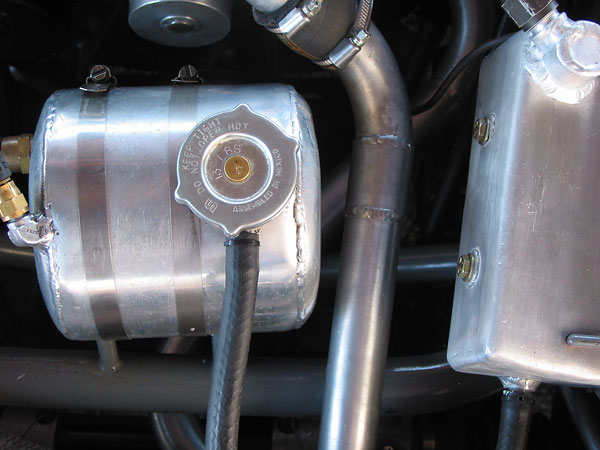
�
Custom fabricated aluminum coolant header tank, with 13psi pressure cap.
�
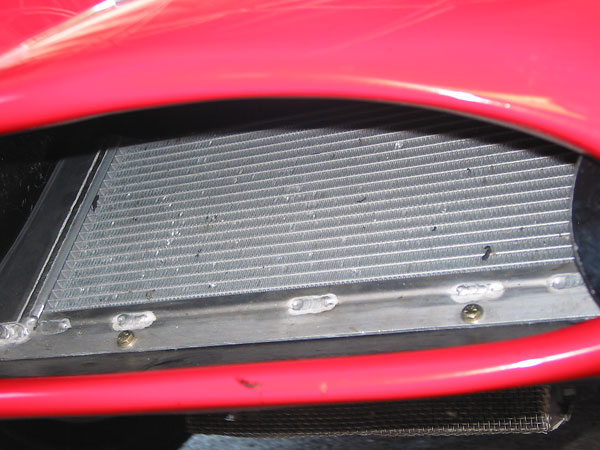
�
Tony Garmey of Horizon Racing created this radiator by welding two off-the-shelf radiators together.
�
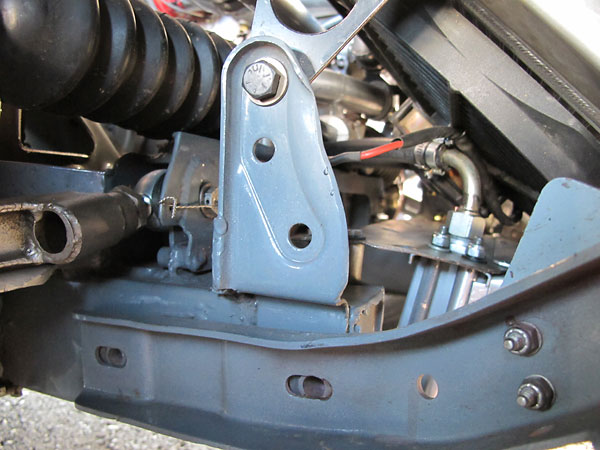
�
Electric radiator fan.
�
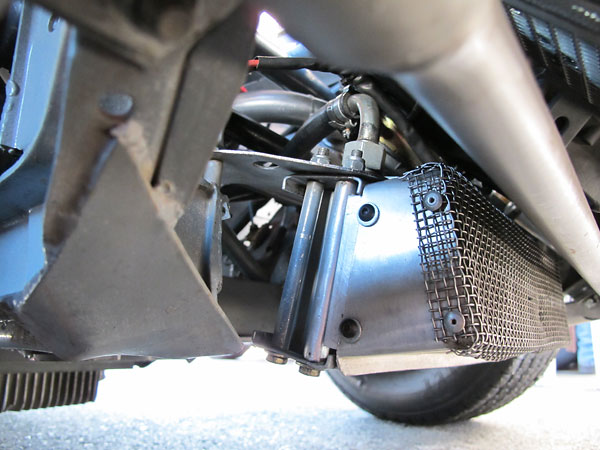
�
Oil cooler.
�
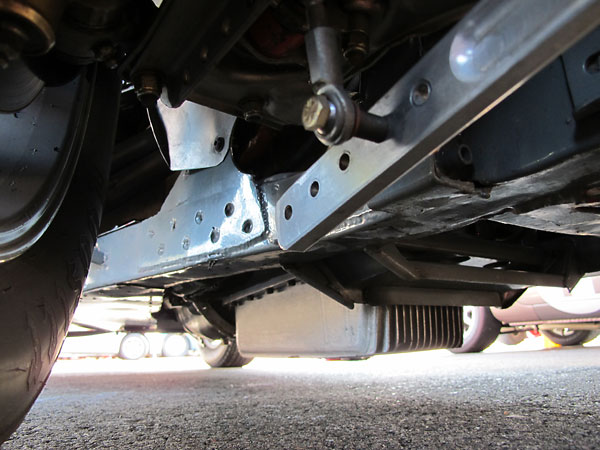
�
Deep sump finned aluminum oil pan.
�
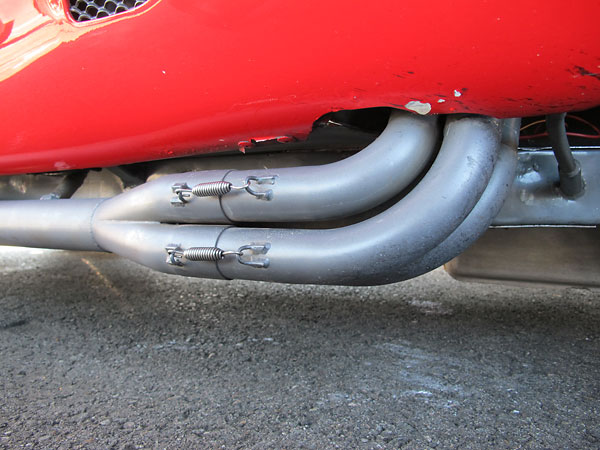
�
Slipjoints at the header collector.
�
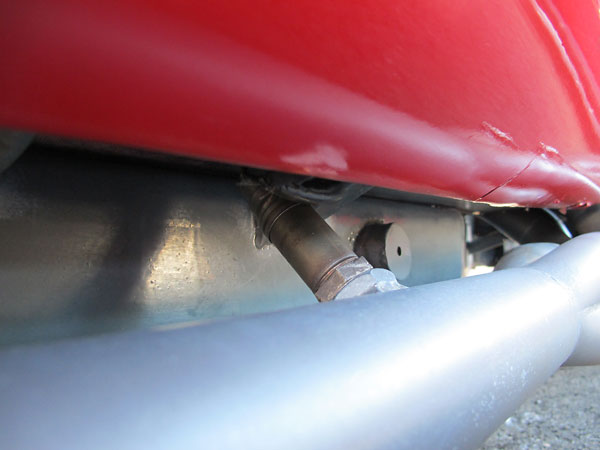
�
Wideband oxygen sensor.
�
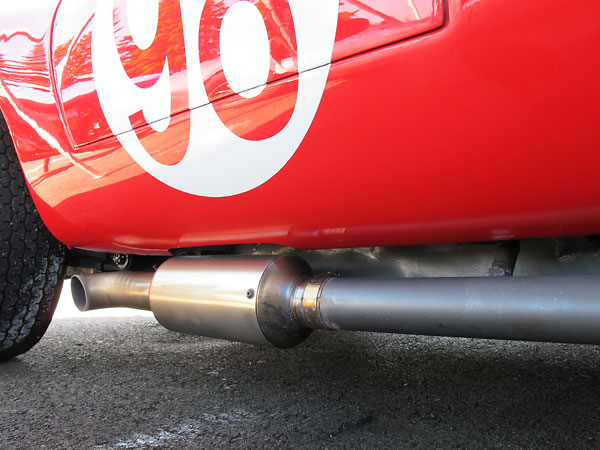
�
Stainless steel muffler.
�
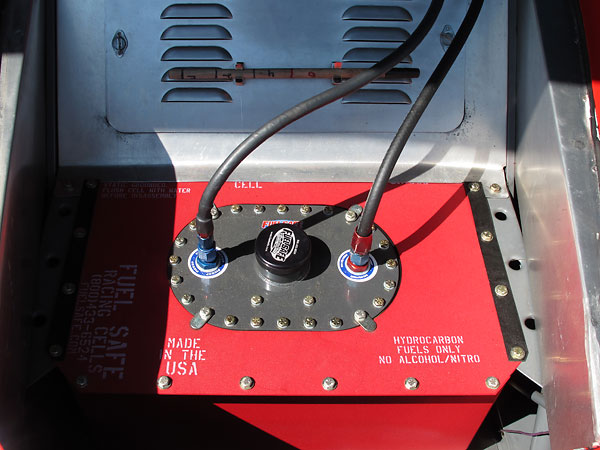
�
Fuel Safe steel canister fuel cell. Note dipstick for checking fuel level, and service panel for rear end.
�
�
Front Suspension
��
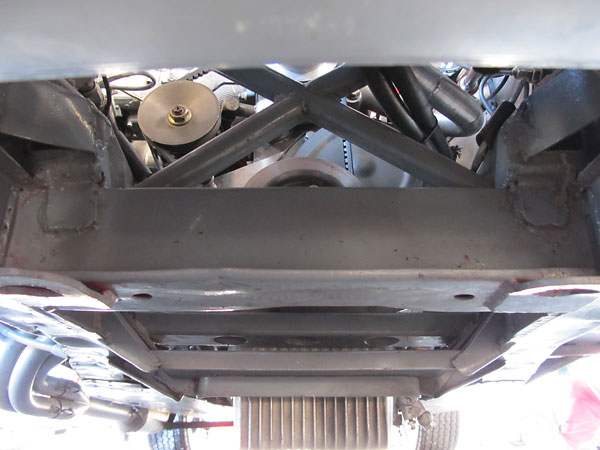
�
Reinforced Triumph TR3 frame, with crossmember added between front suspension pick-up points.
�
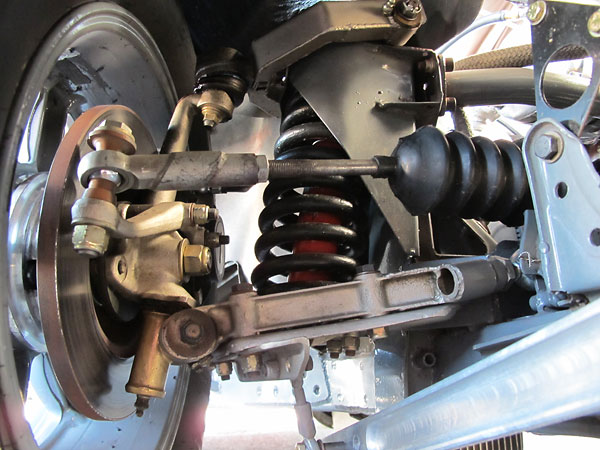
�
Stock lower control arms modified with Heim joints on inboard side for adjustability.
�
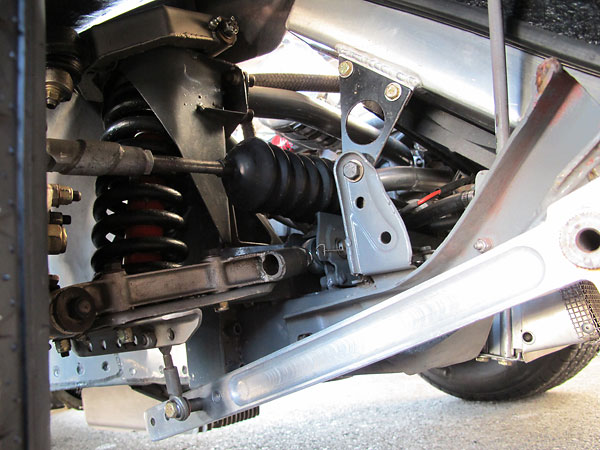
�
Adjustable (5 position) modular anti-sway bar.
�
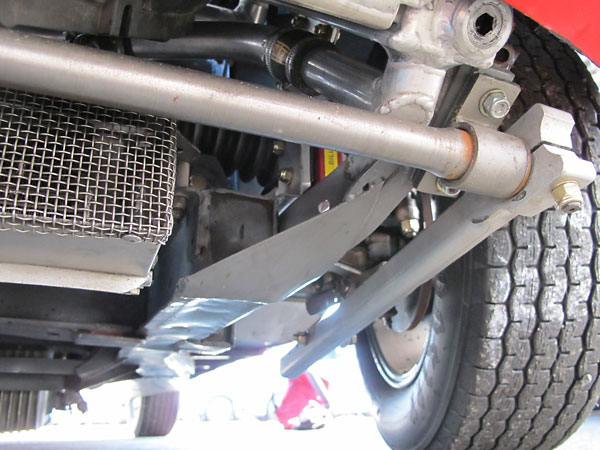
�
Anti-sway bar mounting brackets.
�
�
Enjoying this article? www.BritishRaceCar.com is partially funded through generous support from readers like you!
�
To contribute to our operating budget, please click here and follow the instructions.
�
(Suggested contribution is twenty bucks per year. Feel free to give more!)�
Rear Suspension
��
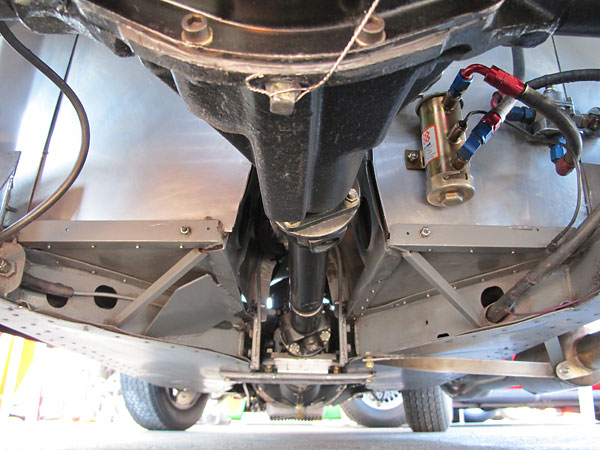
�
Facet Bendix-style electric fuel pump. Holley adjustable fuel pressure regulator.
�
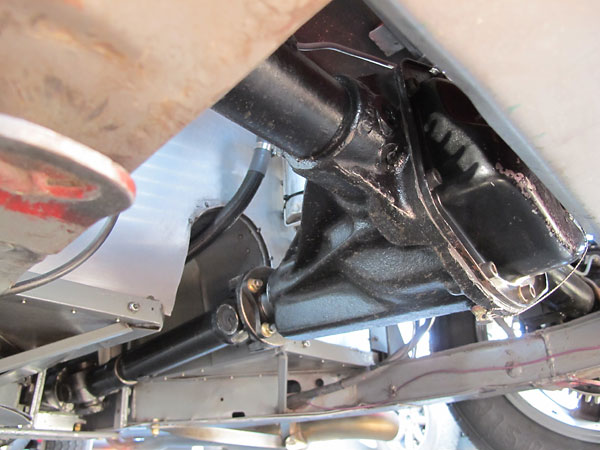
�
Triumph TR3 housing with Tran-X limited slip differential inside.
�
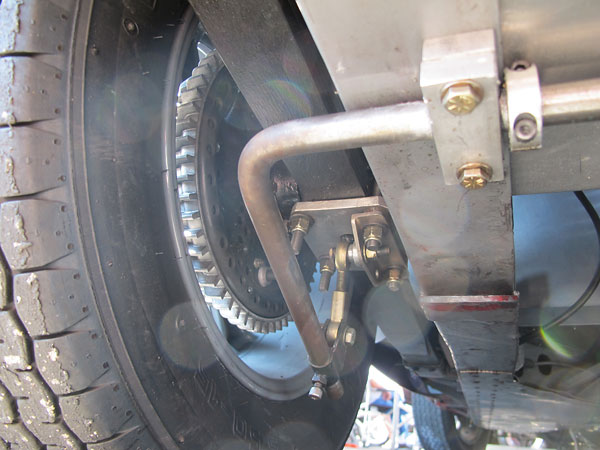
�
Adjustable anti-sway bar mounted on aluminum pillow blocks.
�
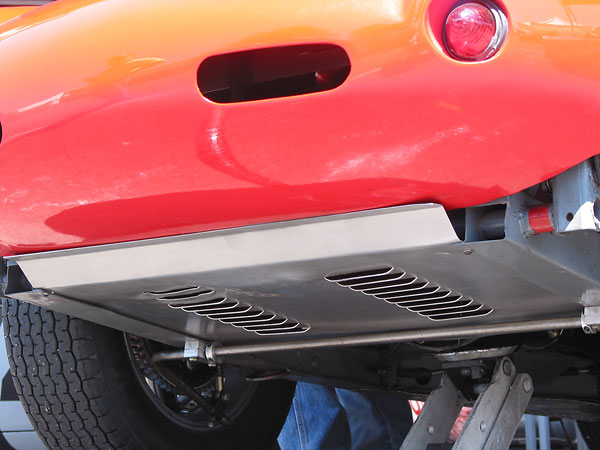
�
Neat louvered tray under the fuel cell.
�
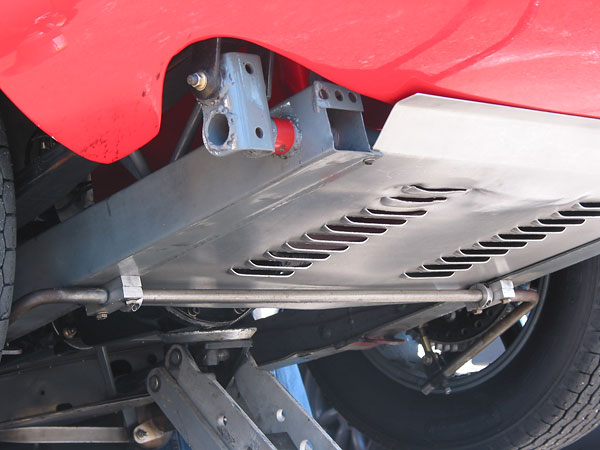
�
Raised spring shackle mounts.
�
�
Interior
��
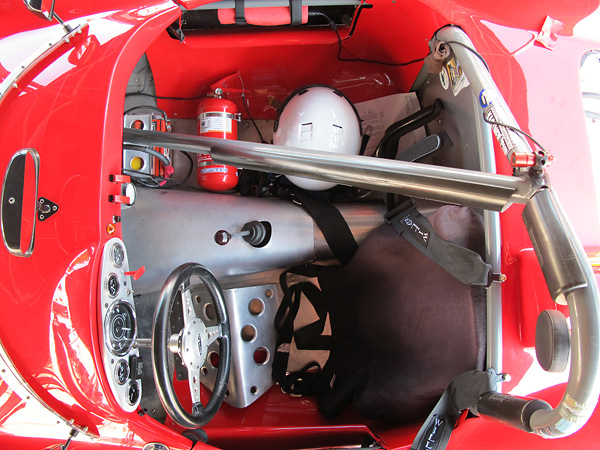
�
This is the Devin's second cage. Bill had an rollover accident, so Tony replaced the first one.
�
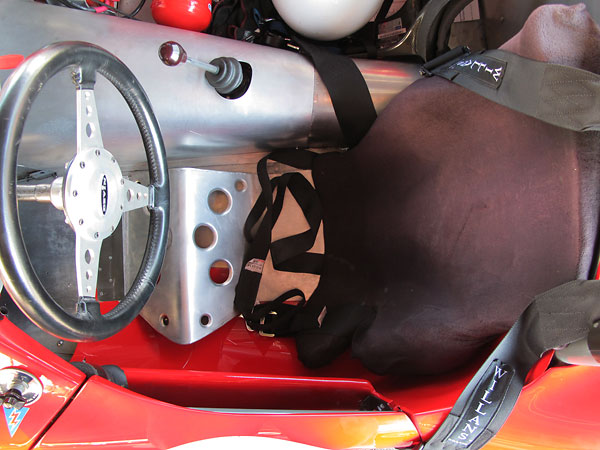
�
Willans safety harness.
�
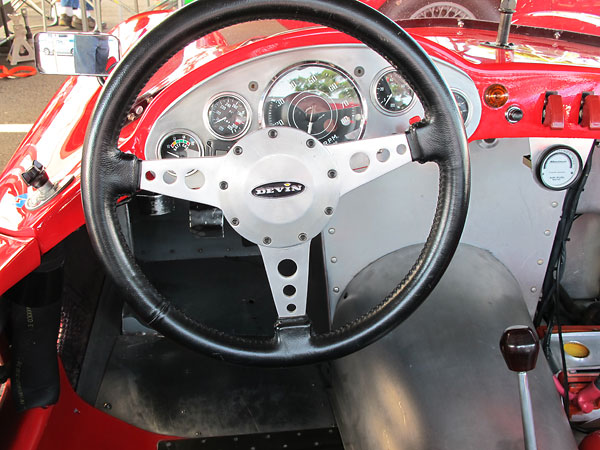
�
Custom molded seat cushions and Willans safety harness.
�
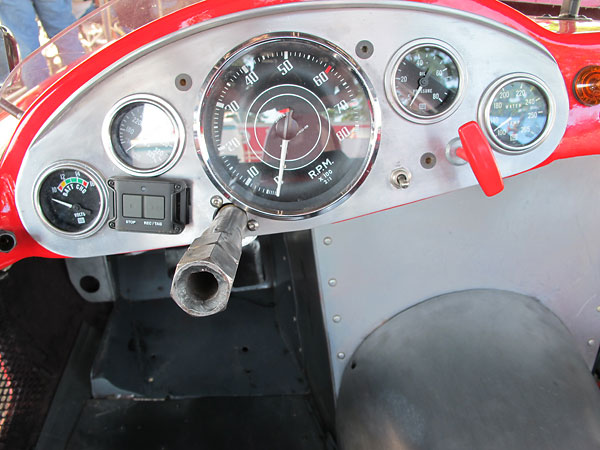
�
Jaeger tachometer, in combination with Stewart Warner voltmeter, oil temperature gauge,
�
oil pressure gauge, water temperature gauge, and air/fuel ratio gauge.
�
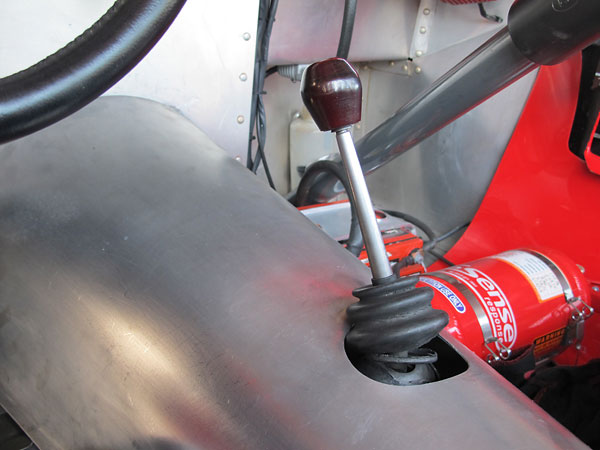
�
Triumph TR3 shifter lever, rotated 180 degrees for better driver comfort in the Devin cockpit.
�
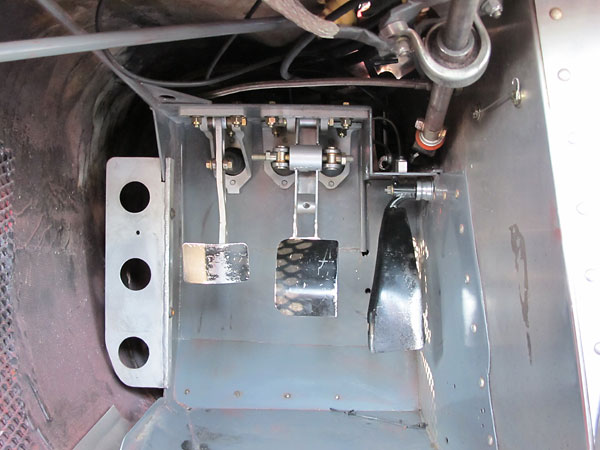
�
Dual brake master cylinders with adjustable bias bar.
�
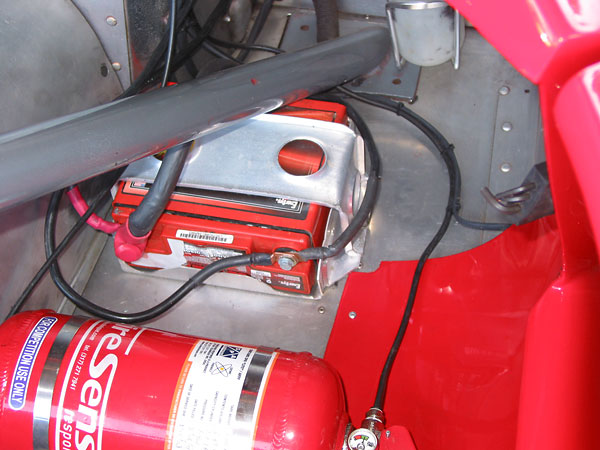
�
Enersys / Odyssey sealed lead acid battery.
�
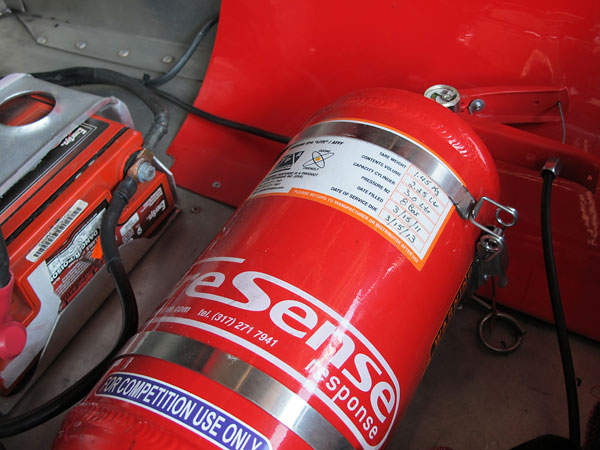
�
SPA Design FireSense fire suppression system.
�
�
Exterior
��
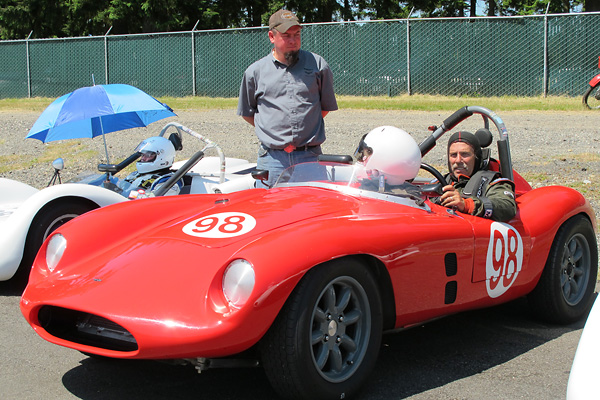
�
During SOVREN's 2011 Pacific Northwest Historics at Pacific Raceways in Kent Washington,
�
Bill Hart circled the beautiful 2.25 mile circuit with a best lap time of 1:43.473, which
�
averages out to 78.28mph.
�
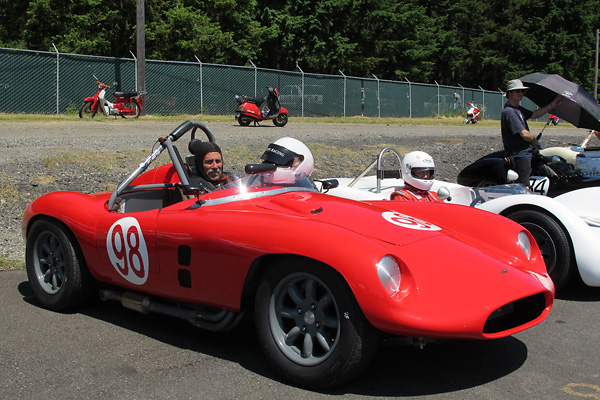
�
The famous Italian styling house Scaglietti deserves all the credit for Devin's exceptional styling.
�
Bill Devin borrowed an 1955 Ermini Tipo 357 Sport (body by Scaglietti) and made molds off of it.
�
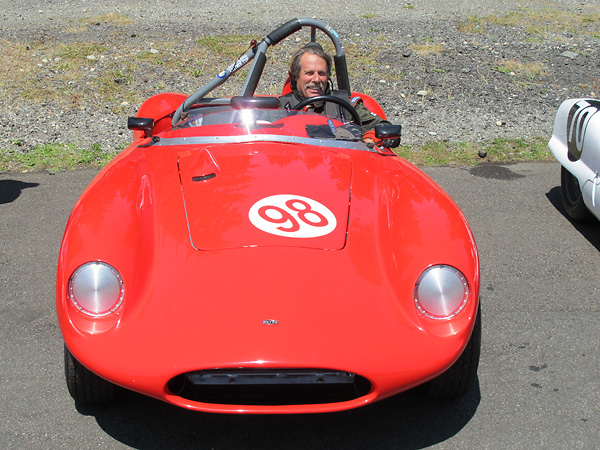
�
No one enjoys vintage racing more than Bill Hart. Look at that grin!
�
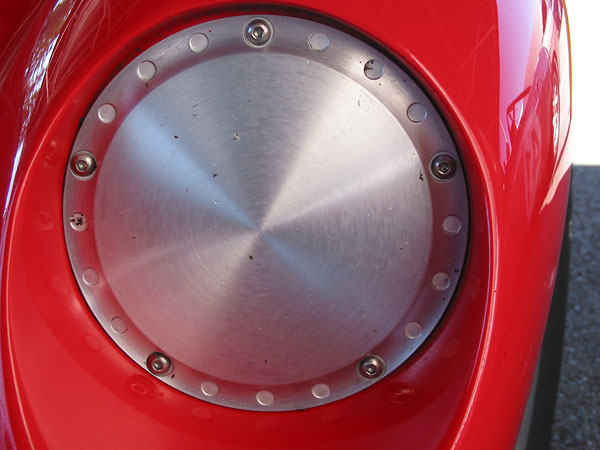
�
Harley Davidson 5-hole "derby" covers (i.e. clutch housing dust covers) are an attractive and
�
cost effective alternative to sealed beam headlights or purpose made headlamp bucket covers.
�
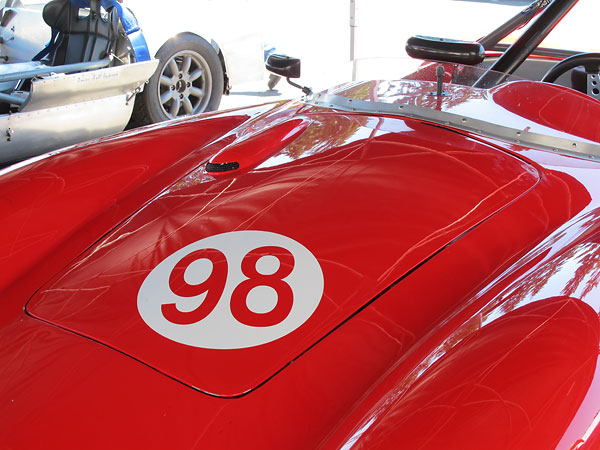
�
Devin bonnet, with carburetor-side vent added.
�
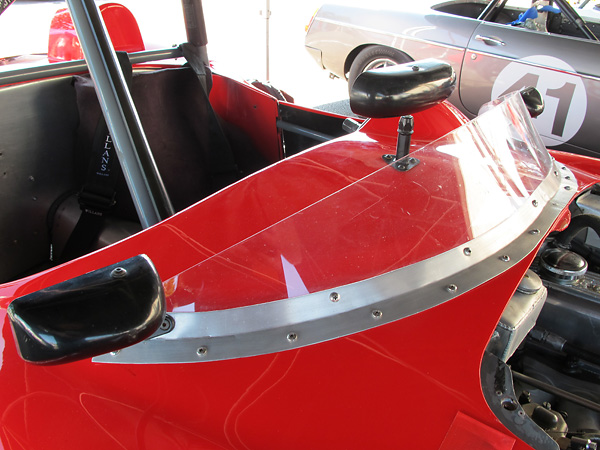
�
Low profile windscreen. SPA Design rear view mirror.
�
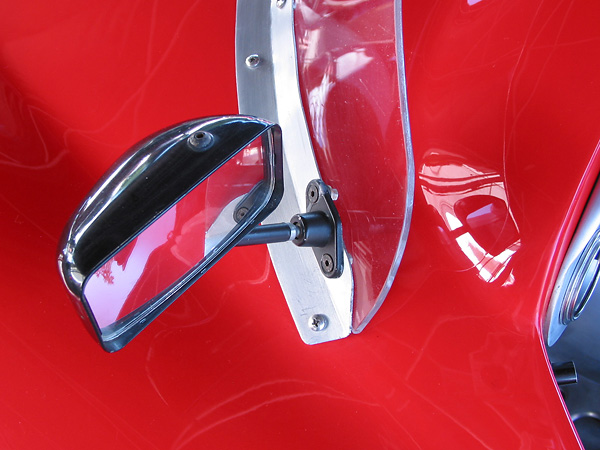
�
SPA Design side view mirror.
�
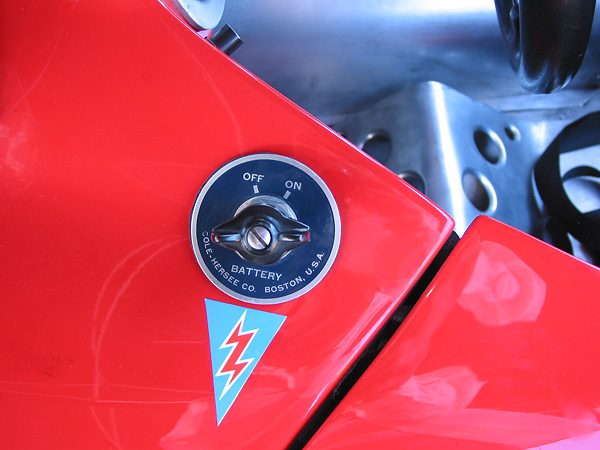
�
The battery cut-off switch label plate says "Cole-Hersee Co. Boston, U.S.A." but the
�
knob style indicates that a Lucas battery disconnect switch has been substituted.
�
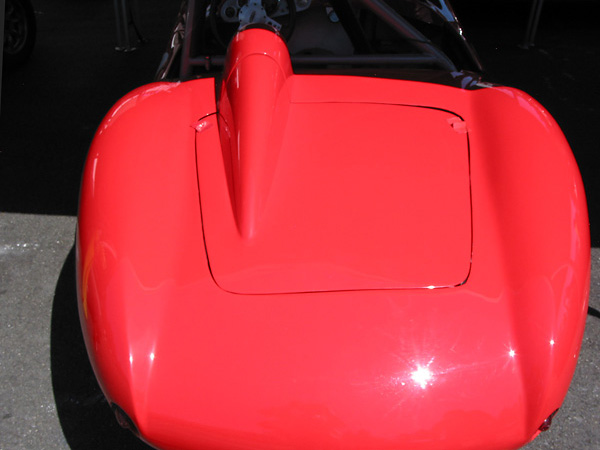
�
Devin boot lid with molded-in helmet fairing.
�
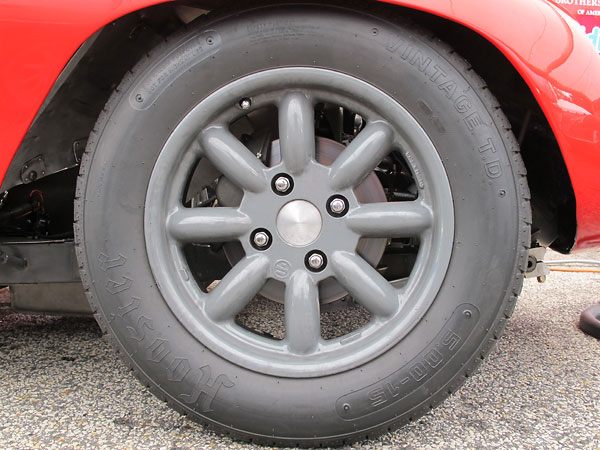
�
Compomotive ML 8-spoke aluminum wheels.
�
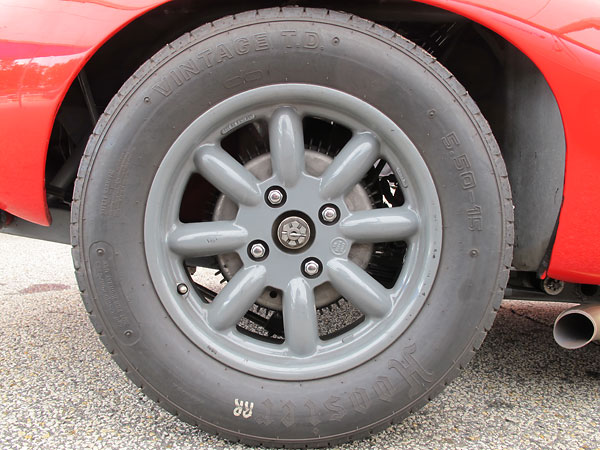
�
Hoosier Vintage T.D. tires (5.00x15 front, 5.50x15 rear).
�
| Notes: | ||
| (1) | �
Devin ads sometimes included a nifty diagram and a chart to show the body sizes available.�
Initially there were twenty-four models, and later they added three larger sizes.�
Nominal supported wheelbases were as follows: 78", 80", 82", 84", 86", 88", 90", 92", 94", 96", 98", 100", and 104".�
Body width measured at the front fender lips: initially 54", 58", or 62", and later 70".�
Body width measured at the rear fender lips: initially 52", 56", or 60", and later 68".�
Fiberglass bodies are relatively easy to modify. For example, according to the advertisement�
all twenty-seven models came with the same size radiator opening but we know from observation�
that some customers enlarged the radiator opening, presumably to increase cooling capacity.�
� | |
�
�
All photos except the last two (tire/wheel photos) are from July 2011 when we viewed the car at�
The Pacific Northwest Historics at Pacific Raceways in Kent, Washington. The tire/wheel photos�
are from May 2012 when we viewed the car at Road Atlanta during The Mitty.�
All photos by Curtis Jacobson and Ryan Thomas for BritishRaceCar.com, copyright 2012.�
All rights reserved.
�
| If you liked this article, you'll probably also enjoy these: | �|||||
 | �
Bob Wismer Tornado ThunderBolt (~1960) | �
 | �
George Wright '61 Triumph TR4 | �
 | �
Bill Hart Triumph TR250K (~1968) | �
| You're invited to discuss anything you've seen here on The British Racecar Motorsports Forum! | �|||||
�
Notice: all the articles and almost all the photos on BritishRacecar.com are by Curtis Jacobson.
�
(Photos that aren't by Curtis are explicitly credited.) Reproduction without prior written permission is prohibited.
�
Contact us to purchase images or reproduction permission. Higher resolution images are optionally available.
�

 �
�